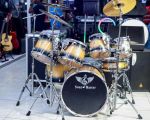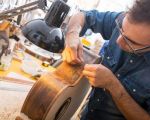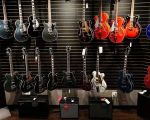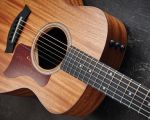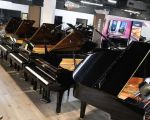How to Start Your Music Production Journey on a Budget – A Beginner's Guide
When I first dove into the world of music production, I was filled with excitement but also overwhelmed by the costs associated with getting started. As someone on a tight budget, the idea of spending thousands of dollars on professional equipment was intimidating. However, after doing a lot of research and trial and error, I realized that it's entirely possible to start making music without breaking the bank. In this guide, I’ll walk you through how I began my music production journey on a budget, sharing valuable tips and insights to help you do the same. If you’re passionate about making music but don’t want to invest heavily right away, read on to discover how you can get started affordably.
1. The Basics of Music Production
Before I discuss the specifics of getting started on a budget, let’s quickly cover the basics of what you need to begin music production. There are a few essential tools that every beginner needs, but thankfully, you don’t need the most expensive gear to get going. The essential items for music production include:
1.1. Digital Audio Workstation (DAW)
The Digital Audio Workstation (DAW) is the software where all the magic happens. This is where you’ll record, edit, mix, and arrange your music. I initially tried several DAWs before settling on one, and each one had its own strengths. Some popular, affordable DAWs I recommend include:
- Audacity: A free, open-source DAW that is great for beginners. It’s simple to use and has all the essential features you need to get started with recording and editing music.
- Reaper: A budget-friendly DAW with powerful features. It offers a 60-day free trial and then costs only $60 for a license, making it a solid choice for budget-conscious producers.
- GarageBand (Mac users): Free with every Apple device, GarageBand offers a surprisingly comprehensive set of features for starting out in music production.
Each of these DAWs is excellent for beginners and can handle all the basics of music production without the need for a hefty investment.
1.2. Audio Interface
The audio interface is an essential piece of equipment that connects your computer to your instruments, microphones, and other audio sources. When I started out, I opted for an affordable, entry-level interface that still delivered great sound quality. Some budget-friendly audio interfaces that I recommend include:
- Focusrite Scarlett 2i2: A well-regarded, reliable, and affordable option that offers two inputs for microphones or instruments. It’s a great starting point for beginners and costs around $120.
- Behringer UMC22: Another affordable interface that is perfect for beginners. It offers good sound quality for a very reasonable price, around $50.
These options allow you to get high-quality recordings without spending too much money upfront. The Focusrite Scarlett 2i2, for example, gives you the flexibility to record vocals, instruments, and connect various devices.
1.3. Studio Monitors or Headphones
When I first started producing music, I used standard headphones, but quickly realized that having a proper set of studio monitors (or high-quality headphones) made a huge difference in the quality of my mixes. Good sound is essential for mixing, and while high-end studio monitors can be quite expensive, there are budget options that sound great. Here are a couple of recommendations:
- Mackie CR3: A pair of affordable studio monitors that deliver surprisingly clear and accurate sound for their price, typically under $100.
- Audio-Technica ATH-M50X: These headphones are a bit more expensive, but they are widely regarded as some of the best headphones for music production. They provide excellent clarity and a well-balanced sound.
Both of these options provide a good balance of price and quality, which is important when you’re starting out on a budget.
2. Affordable Instruments and Sound Libraries
One of the most exciting aspects of music production is the ability to use virtual instruments and sound libraries. These are software tools that simulate the sound of real instruments or provide synthetic sounds. I started by using free plugins, and many of them are incredibly good for producing high-quality music. Here are some budget-friendly tools I recommend:
2.1. Free VST Plugins
VST plugins (Virtual Studio Technology) are software instruments and effects that you can use in your DAW to expand your sound library. Some of the best free VST plugins include:
- Spitfire Audio LABS: This collection of free virtual instruments includes everything from pianos to strings to synths, and they sound fantastic for no cost.
- Dexed: A free plugin that emulates the classic Yamaha DX7 synthesizer, known for its iconic electric piano sounds.
- Komplete Start by Native Instruments: A free bundle of instruments, sounds, and effects that can be a great way to get started with a wide variety of sounds.
These free plugins offer a ton of variety, and as you grow in your production skills, you can start adding paid plugins to your library. Many paid VST plugins offer more specialized sounds, but I found that starting with free ones helped me immensely in creating a diverse range of tracks without spending money.
2.2. Affordable Sound Libraries
If you’re looking to add more depth to your music, you might want to explore affordable sound libraries. I started using platforms like Splice, which offers royalty-free samples and loops for a monthly subscription fee (as low as $7.99/month). This allowed me to explore a wide range of genres and sounds without spending a fortune. The best part? You only pay for what you download, so you can choose the sounds that best fit your project.
3. Learn and Experiment Without Breaking the Bank
One of the best things about starting on a budget is that it forces you to learn and experiment in creative ways. I found that many high-quality tutorials are available for free or at low cost online. I used websites like YouTube, Skillshare, and Coursera to find free or inexpensive tutorials that taught me everything from basic music theory to advanced mixing and mastering techniques. If you’re just starting out, try to take advantage of these free resources before investing in paid courses.
4. Collaborate with Other Producers
One of the greatest ways to grow as a music producer is to collaborate with others. During my journey, I started networking with other local producers and musicians who were also starting out, and it was incredibly helpful. You can often learn a lot from collaborating with others, and you may even get access to some of their equipment or software that you wouldn't have been able to afford on your own. Plus, collaborations can help you discover new techniques and ideas that you wouldn’t have thought of on your own.
5. Conclusion
Starting your music production journey on a budget is not only possible, but it can also be incredibly rewarding. By using affordable equipment, free plugins, and taking advantage of online resources, I was able to create high-quality music without spending a fortune. As you grow in your skills and start to invest more in your music production setup, you’ll have the foundation to create professional tracks. For more information and resources to help you along your journey, check out Beat Trigger, where you can find great services and advice to kickstart your music production career.

